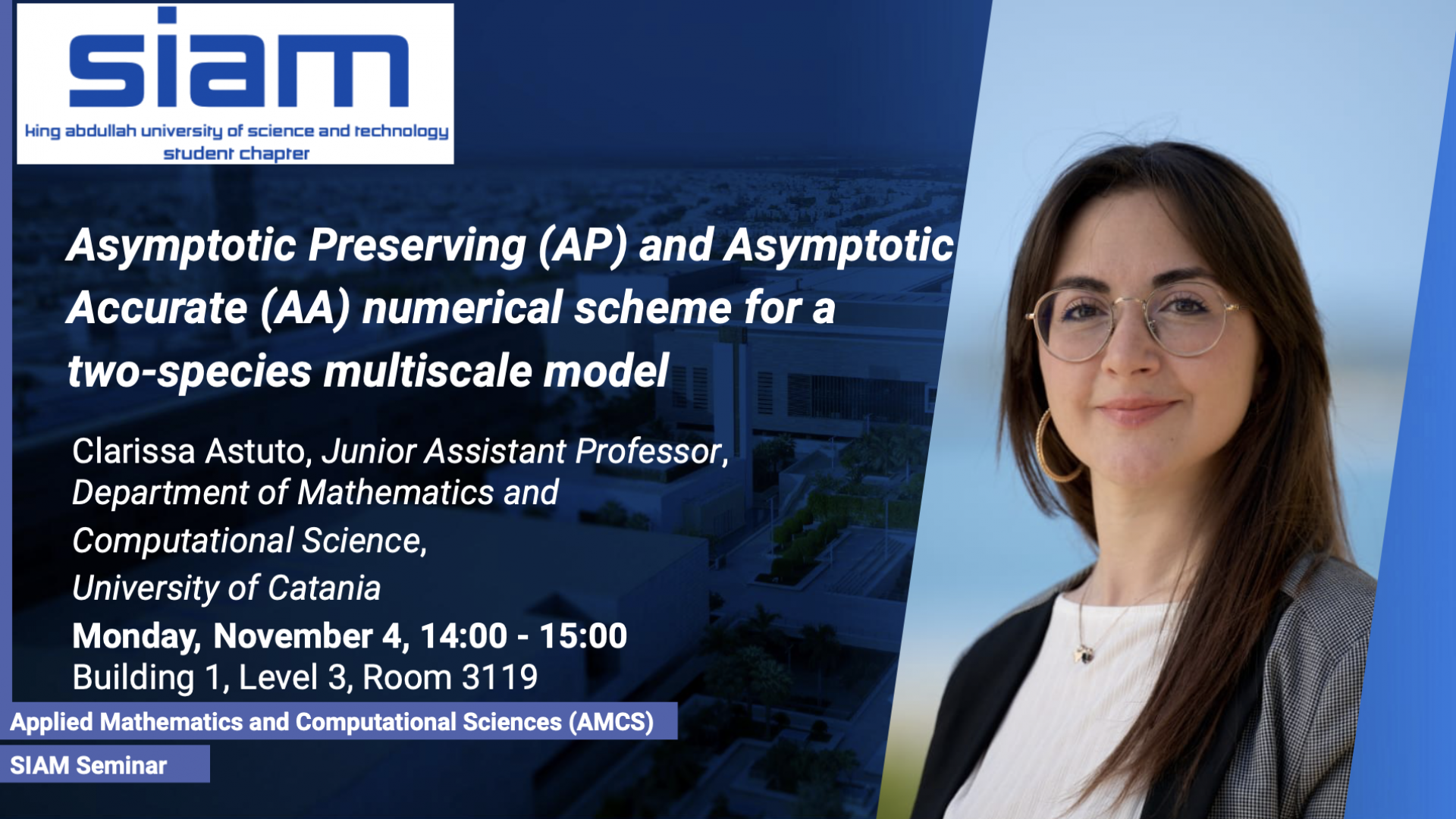Abstract
In this talk we propose and validate a multiscale model for a Poisson-Nernst-Planck (PNP) system, focusing on the correlated motion of positive and negative ions under the influence of a (potentially vibrating) trap. Specifically, we aim to model surface traps whose attraction range, of length δ, is much smaller then the scale of the problem. The physical setup we refer to is an anchored gas drop (bubble) surrounded by a diffusive flow of charged surfactants (ions). When the diffusing surfactants meet the surface of the trap, they are reversibly adsorbed. As in our previous works [1, 2, 3, 4, 5], the effect of the attractive potential is replaced by a suitable boundary condition derived by mass conservation and asymptotic analysis. Since the potential range is δ, an asymptotic expansion is considered, and the boundary conditions are obtained by retaining the lowest order terms in the expansion. This model is particularly innovative as it addresses the interaction between two carriers-positive and negative ions simultaneously, which is often neglected in traditional approaches that treat ion species independently. In the second part of the talk, we address the Coulomb interaction between carriers. For very short Debye lengths, one can adopt the so called Quasi-Neutral limit which drastically simplifies the system, reducing it to a diffusion equation for a single carries with effective diffusion coefficient. This approach, while simplifying the mathematical model, can limit the scope of numerical simulations, as it may not capture the full range of behaviors near the Quasi-Neutral limit. The objective of this work is to develop an Asymptotic Preserving (AP) numerical scheme that remains stable as the Debye length tends to zero, with no stability restriction in the time step. Our AP scheme is designed to handle both regimes: the full system when the Debye length is small but non-negligible, and the Quasi-Neutral regime as the Debye length approaches zero. In our case, the numerical scheme we propose is also Asymptotic Accurate (AA). This means that, in addition to preserving stability, the scheme remains uniformly accurate in the Quasi-Neutral limit.
Brief Biography
Clarissa Astuto is a Junior Assistant Professor at the University of Catania. She completed her PhD under the guidance of Prof. Giovanni Russo at University of Catania and went on to pursue three years of postdoctoral research with Prof. Daniele Boffi at King Abdullah University of Science and Technology. Her research focuses on numerical schemes for partial differential equations (PDEs) and multiscale modeling, with a particular interest in biological applications such as network formation and sorption kinetics in cell membranes.
References
[1] Antonio Raudino, Antonio Grassi, Giuseppe Lombardo, Giovanni Russo, Clarissa Astuto, and Mario Corti. Anomalous sorption kinetics of self-interacting particles by a spherical trap. Communications in Computational Physics, 31(3):707–738, 2022.
[2] Clarissa Astuto, Antonio Raudino, and Giovanni Russo. Multiscale modeling of sorption kinetics. Multiscale Modeling & Simulation, 21(1):374–399, 2023.
[3] Clarissa Astuto, Armando Coco, and Giovanni Russo. A finite-difference ghost-point multigrid method for multi-scale modelling of sorption kinetics of a surfactant past an oscillating bubble. Journal of Computational Physics, 476:111880, 2023.
[4] Clarissa Astuto, Mohammed Lemou, and Giovanni Russo. Time multiscale modeling of sorption kinetics i: uniformly accurate schemes for highly oscillatory advection-diffusion equation. arXiv preprint arXiv:2307.14001, 2024.
[5] Clarissa Astuto. High order multiscale methods for advection-diffusion equation with highly oscillatory boundary condition. arXiv preprint arXiv:2401.12226, 2024.
